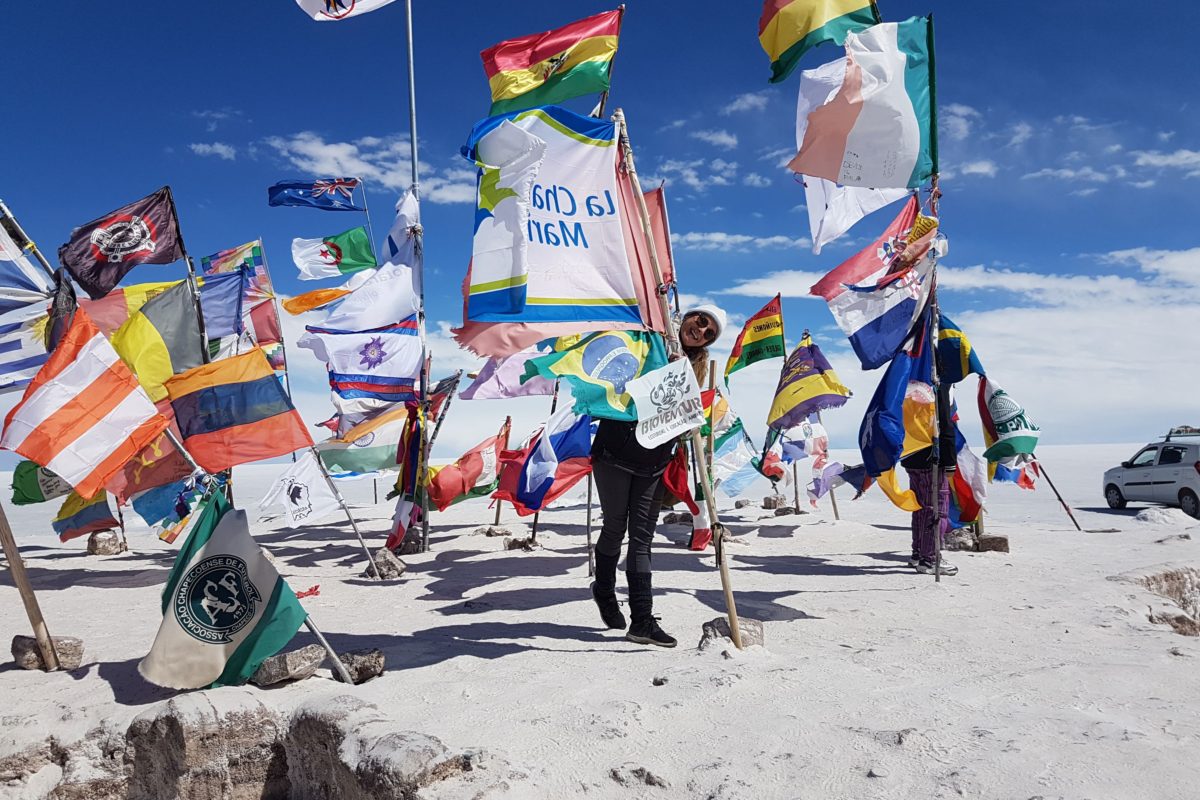
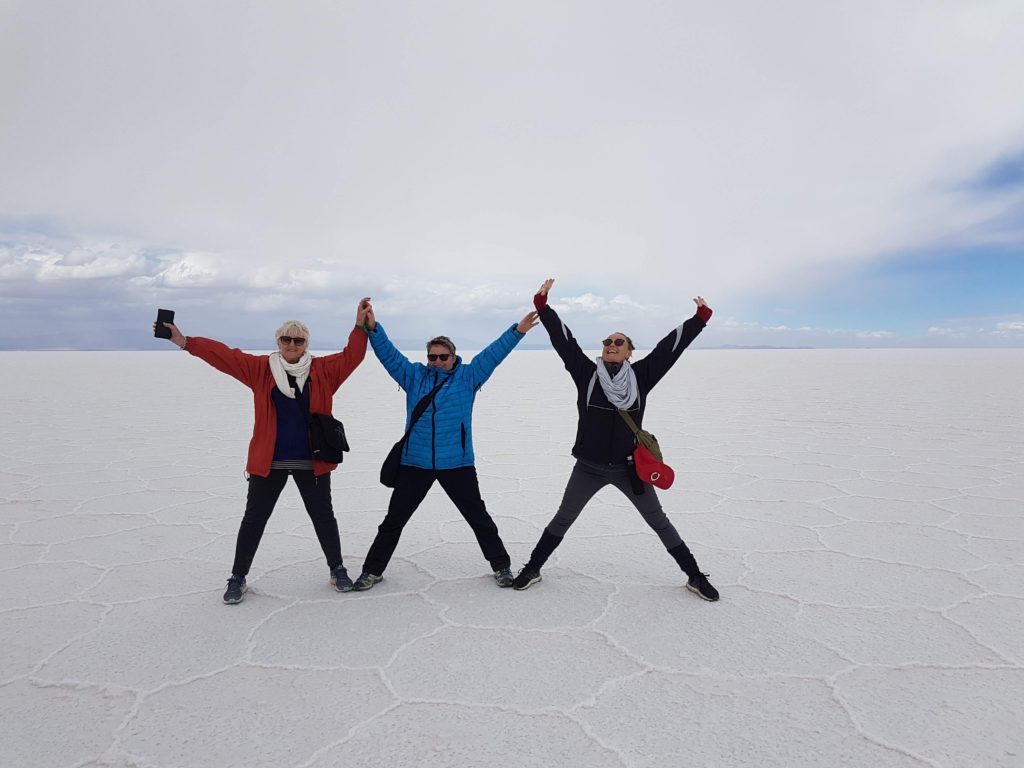
Salar de Uyuni, situated in Bolivia’s south, are the largest salt flats (12,000 square km’s) in the world and sit 350 km south of La Paz.
Our tour with Andes Salt Expeditions began at 10.30 am, allowing plenty of time to arrive on a flight on the same day. There were six of us plus the driver snugly tucked into in a Toyota Land Cruiser.
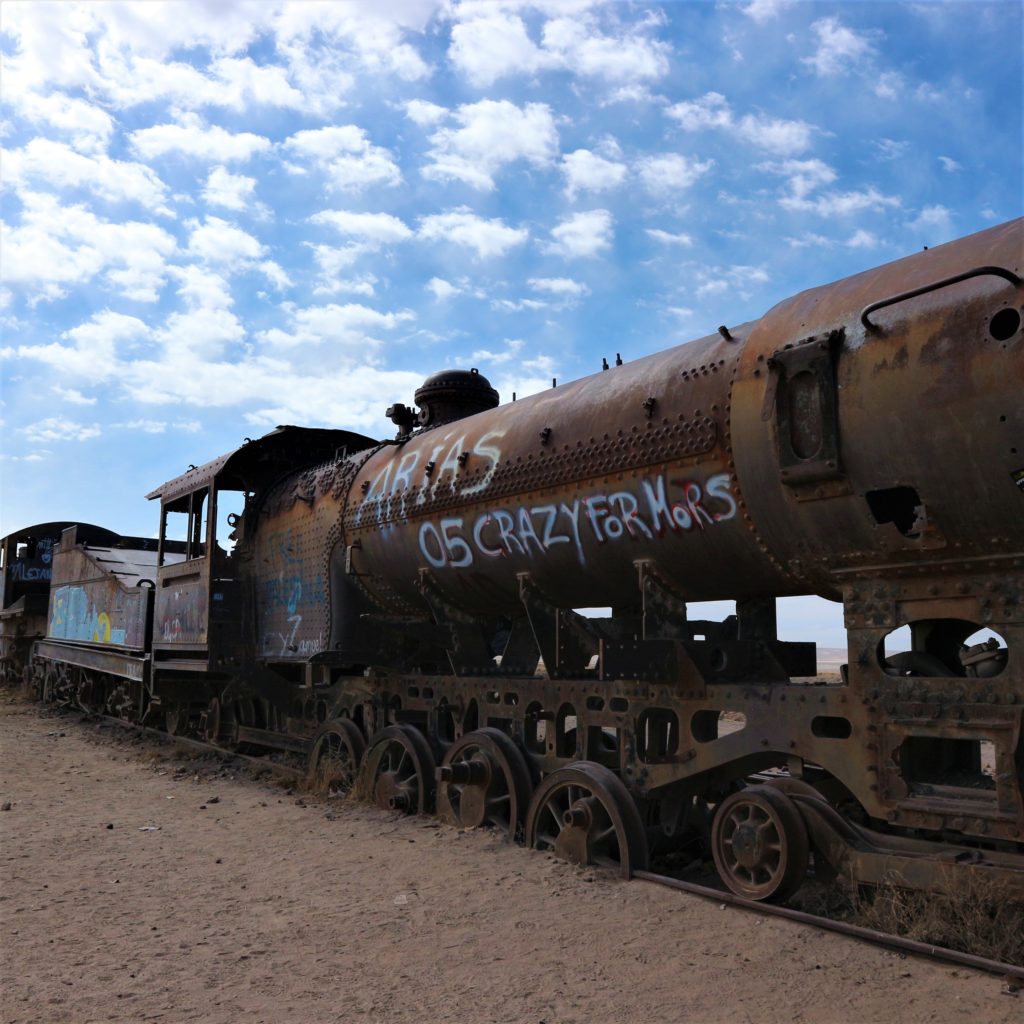
Train Cemetery
First stop the train cemetery. Back when minerals were being heavily mined in this area, it was donkeys and llamas that were used to transport them. Then the French introduced trains to replace the animals until the mining dried up. These trains have lain dormant for 130 years as the build up of sand and graffiti can attest to.
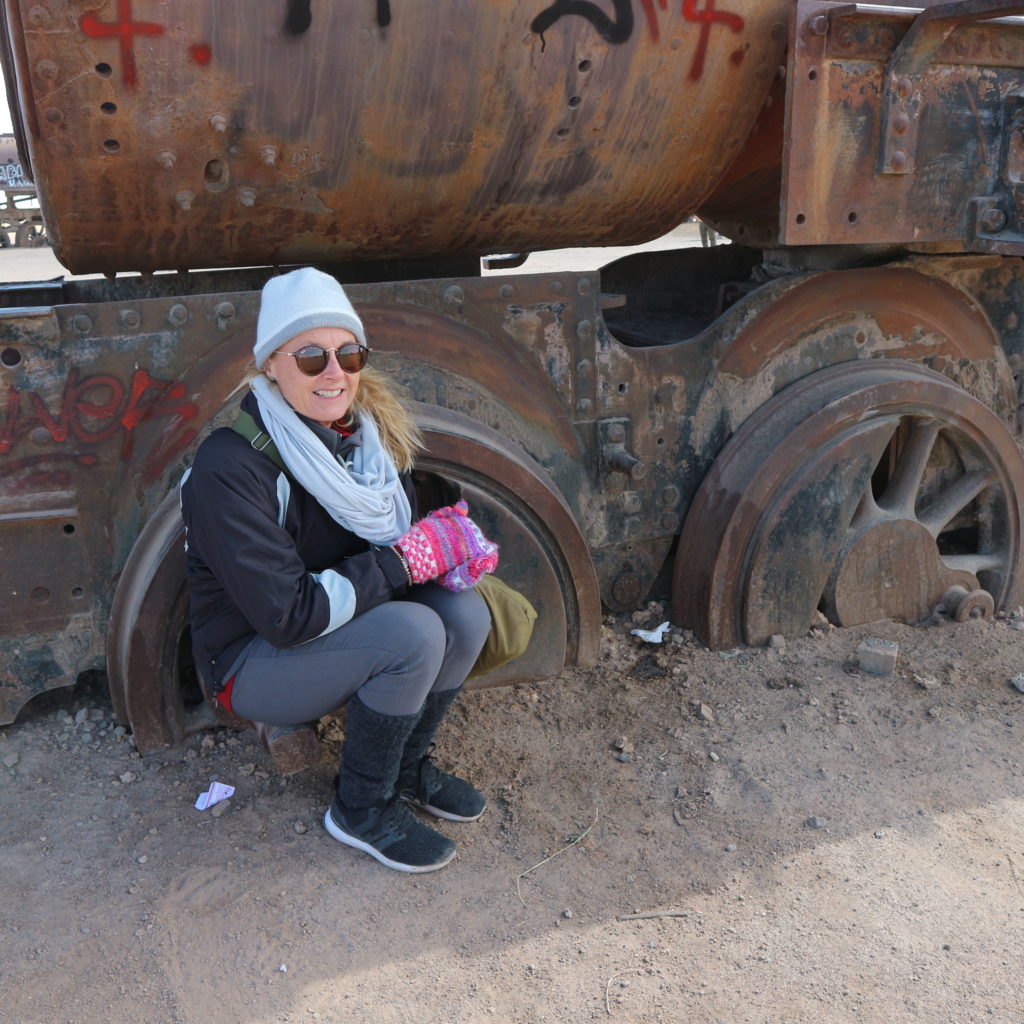
Next we moved across to the other side of town and into the salt markets. Here there are loads of jerseys, beanies, ponchos and leg warmers ala Flash-dance (see photo above) available for purchase. They’re all supposedly made from llama’s wool, although of varying quantities and qualities. They feel lovely but the cheaper versions tend to pill, ball-up and soon look loved and well worn.
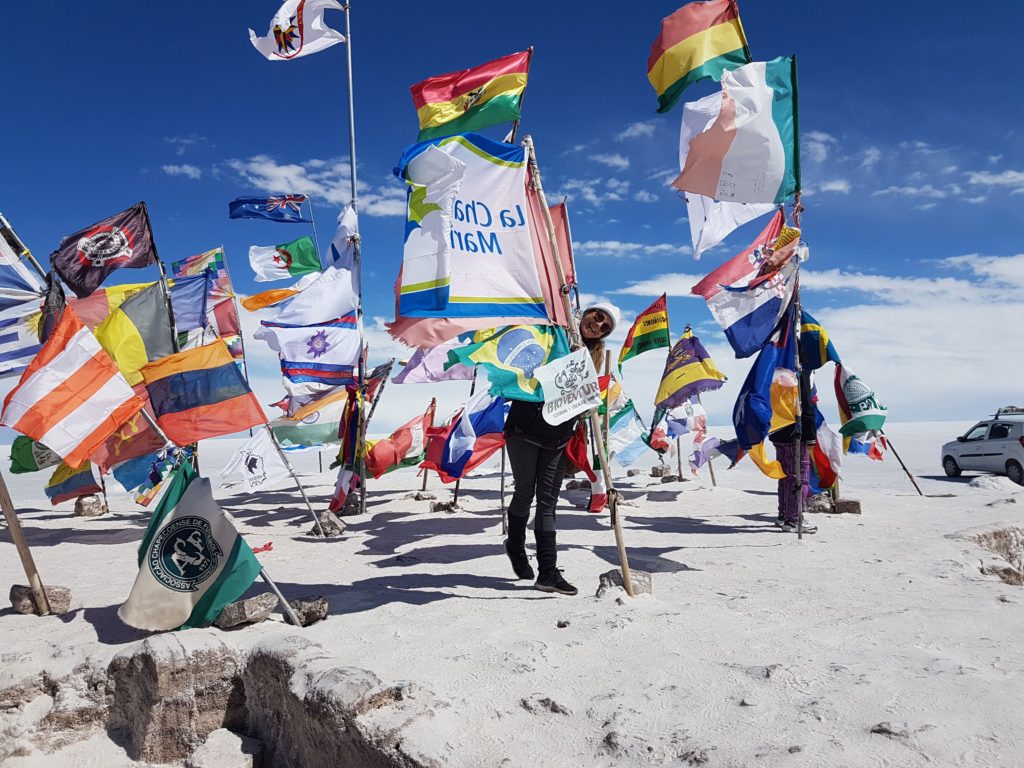
Salt Hotel
An hour or so later we arrive at the second salt hotel ever built. The first one, built in 1993 had to be closed down and this one, built in 2007 is now a museum and lunch stop for trippers.
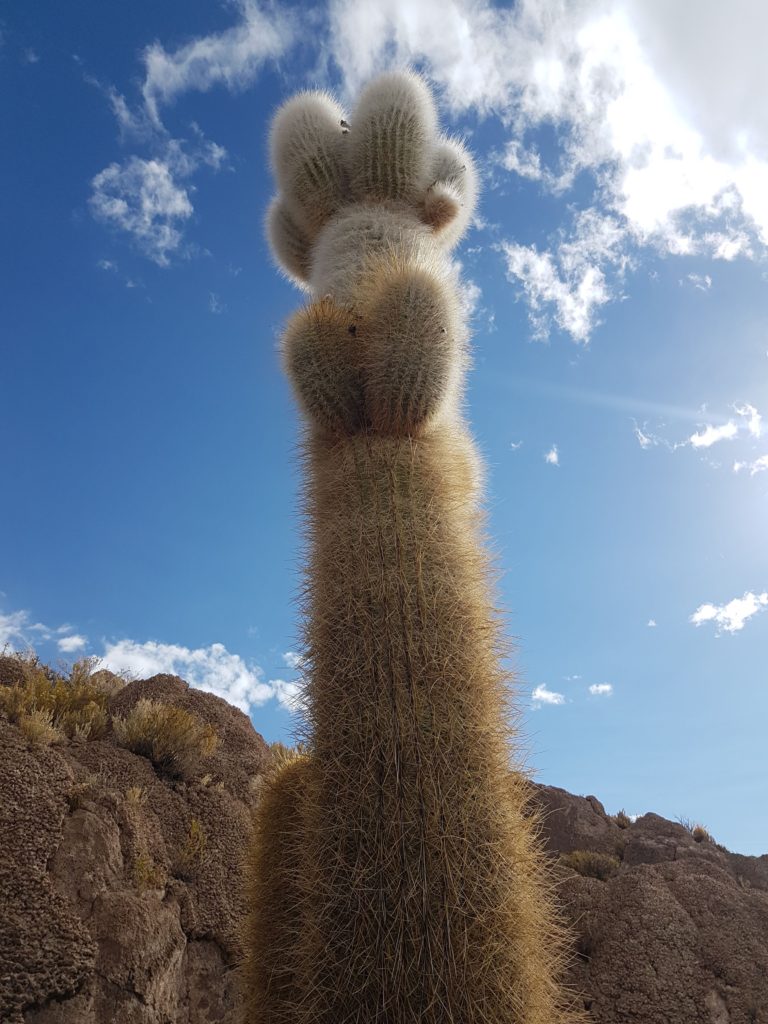
Grand Cacti
Onto a small island (an island surrounded by salt) which apart from rock are covered in cacti. And massive ones too. I’m a complete novice when it comes to cactus, any type of cactus, but these great poles covered in sharp needles had me gazing in wonder.
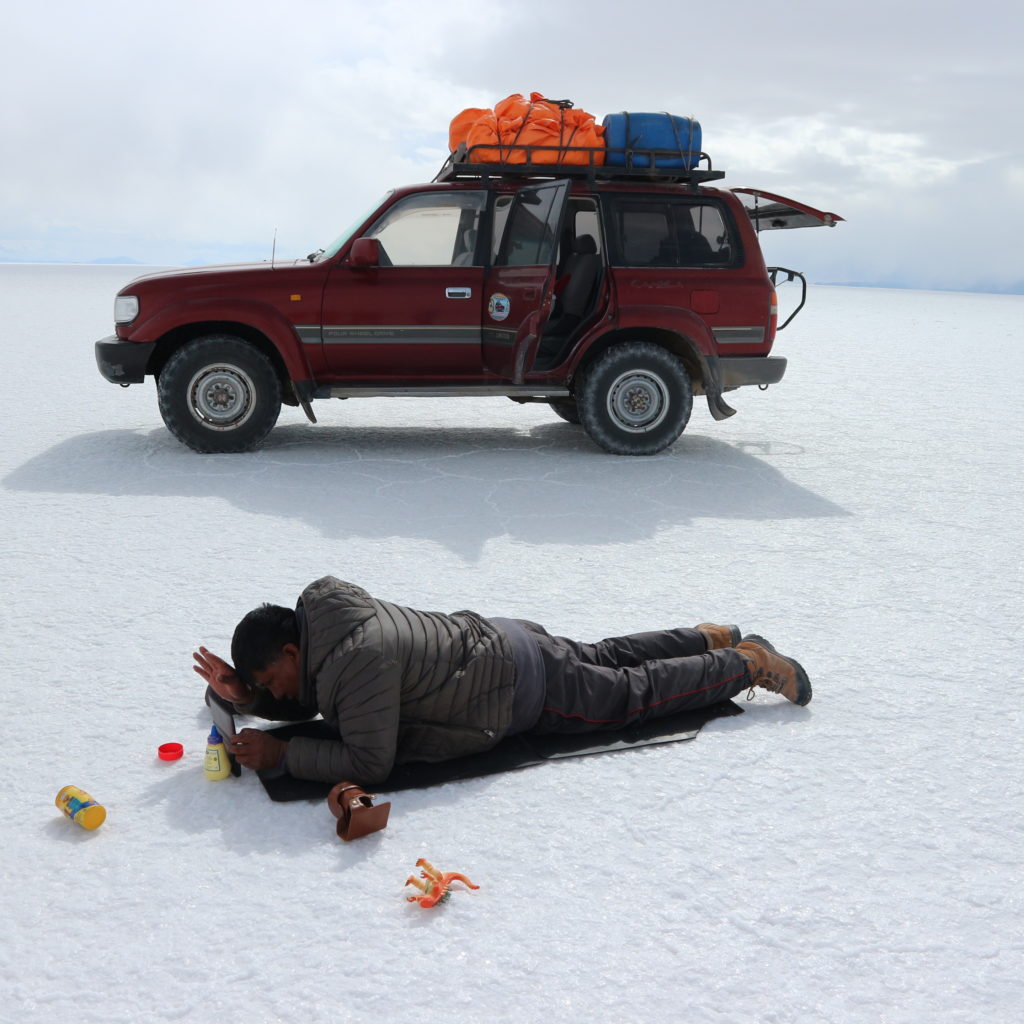
Perspective Photos
If you search Google for Salar de Uyuni you’ll likely be shown a lot of cool perspective photos and videos. We hadn’t done our homework for ideas but our driver was a great enthusiast with his own ideas. So we happily performed for him while he lay on the salt on a car mat and played producer. My advice is if you’re wanting some great shots here, do your homework and bring the props along with you.
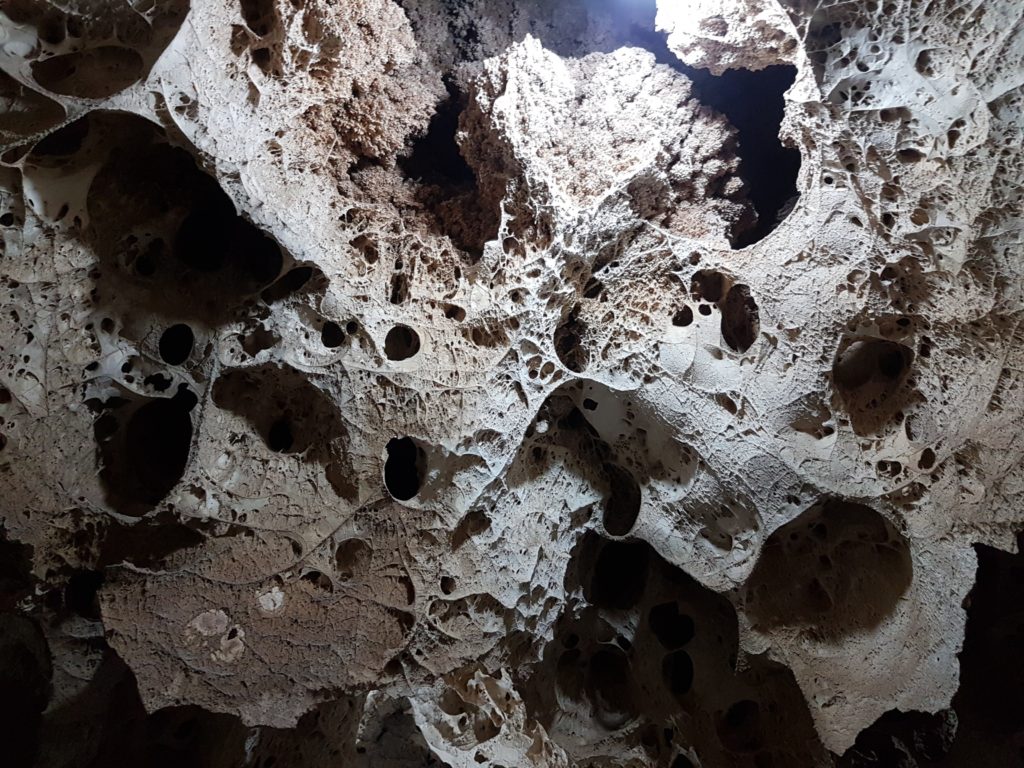
Sub-Aquatic Cave
This huge salt flat used to be part of the Pacific Ocean and mostly underwater therefore there’s coral everywhere. The Gruta de las Galaxias was our next visit and is worth a look. It’s a sub-aquatic cave formed when the area was still a lake. It’s full of what some say is calcified magma and or some say, is fossilized algae and coral deposits. Either way it’s an impressive site. Nearby is another cave cemetery full of small graves that were dug into the side of the hill. Skulls were evident in some.
There’s a mirador (look out) on top of these caves with great views of the flats.
Our Salt Hotel Experience
We finished our day with an unexpected surprise. Our accommodation was a small hotel made of salt. The walls were made out of salt bricks and below you, a crunchy-underfoot salt floor. The rooms, without any type of heating were freezing but there was a heater in the communal dining area.
You could pay for a hot shower if you wanted. We elected to have dinner and relocate to the amazingly comfortable beds early ready for the next day’s pre-dawn departure. We went to bed armed with our hot water bottles filled (at a charge for the hot water) ready to fight off the chill.
Snow, in the largest salt flats
We were up at 4.30 am for a 5 am departure so we could drive the hour needed to greet the sun in the best sunrise spot. The drive itself was an experience as visibility in the dark and the fog was very slim. And here’s the ironic thing, there was no sunrise to be seen or any sun at all for the rest of the day. Instead it was snowing, something our guide insisted it rarely ever did there. I’m not sure whether to class this as a serendipitous moment or not.
Certainly it was an amazing experience, for someone who’s spent the last ten years living in a tropical climate to see cactus covered in snow. It was freezing however and if only I’d dressed for a snow storm, it would have been even more amazing.
And unfortunately from a tourist point of view it made things less inviting than staying in the warmth and dryness of the land cruiser. Especially if you climbed that rise only to discover the view had ceased to exist behind the weather.
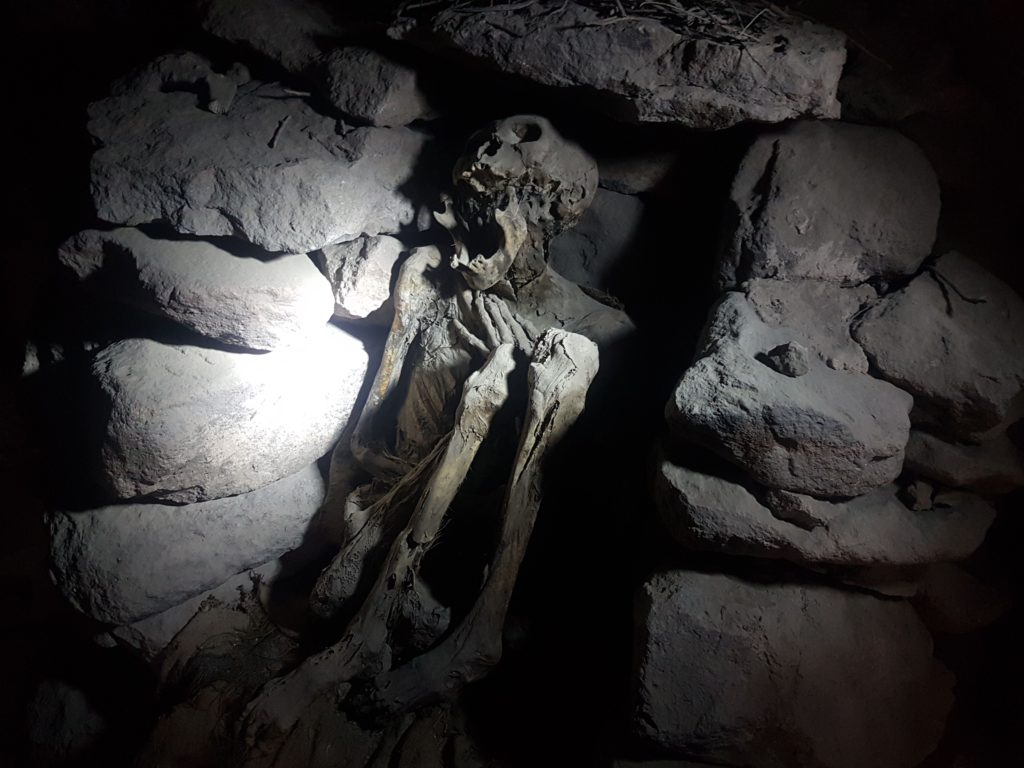
Mummies on the Volcano
We had a picnic in the car and drove, thankfully, up the Comunidad Coqueza volcano. We then forced ourselves to walk the 100 meters from the car to the cave that houses the mummies. As you enter the cave the first you’ll see are a family group of four. Mum and her three children. There are also a man and woman couple together with the remains of their llama. And also a male, of about 90 years old on his own. They’re thought to be part of the indigenous Chipaya people’s, some of the first inhabitants of South America.
Our last stop, still with snow, is what could only loosely be termed geysers but was more like small bubbling pools. Too far from the volcano’s for the water to be hot, gases force their way to the surface and cause the water, for us at this time, to only bubble. At other times it’s shooting the water skyward.
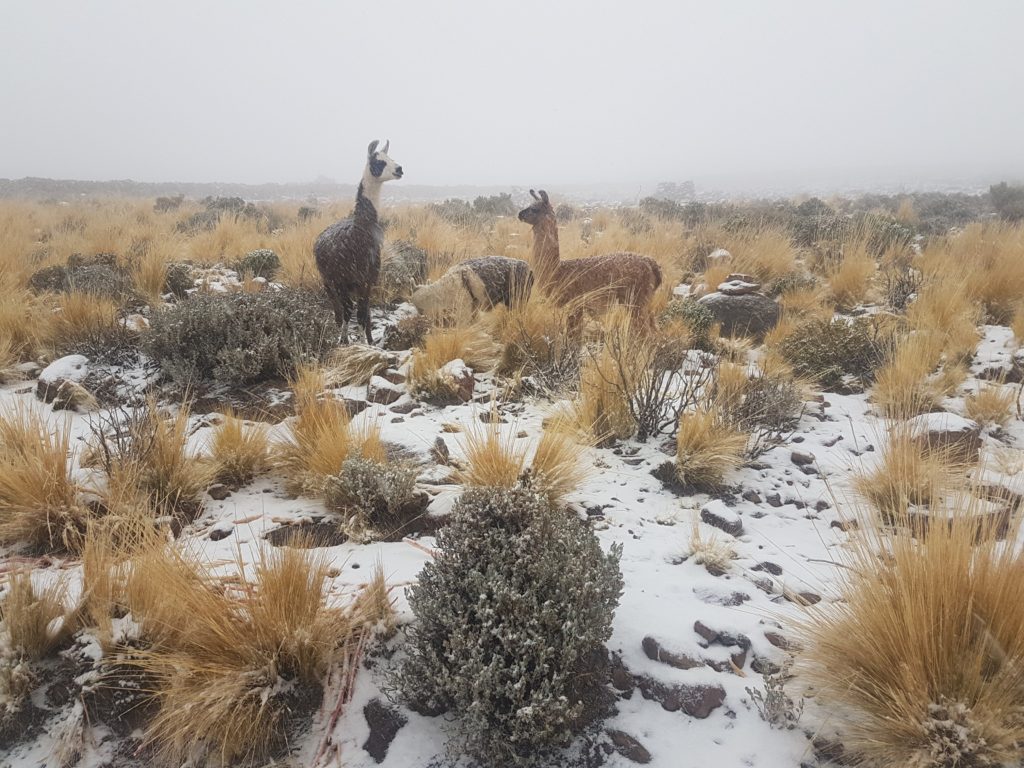
Half an hour later we’re back at Uyuni where it continued to snow until about 4 pm.
Snow aside, it was a fantastic trip of first time sights.

- We took along an extra 100 Bolivianos to cover incidentals like the use of the baño (bathroom) – (5 Bolivianos) and site entrances which included the baño – (30 Bolivianos.
- Take lots of thermal clothing, it is especially cold June, July, August.
- Take a hot water bottle to warm up the cold beds

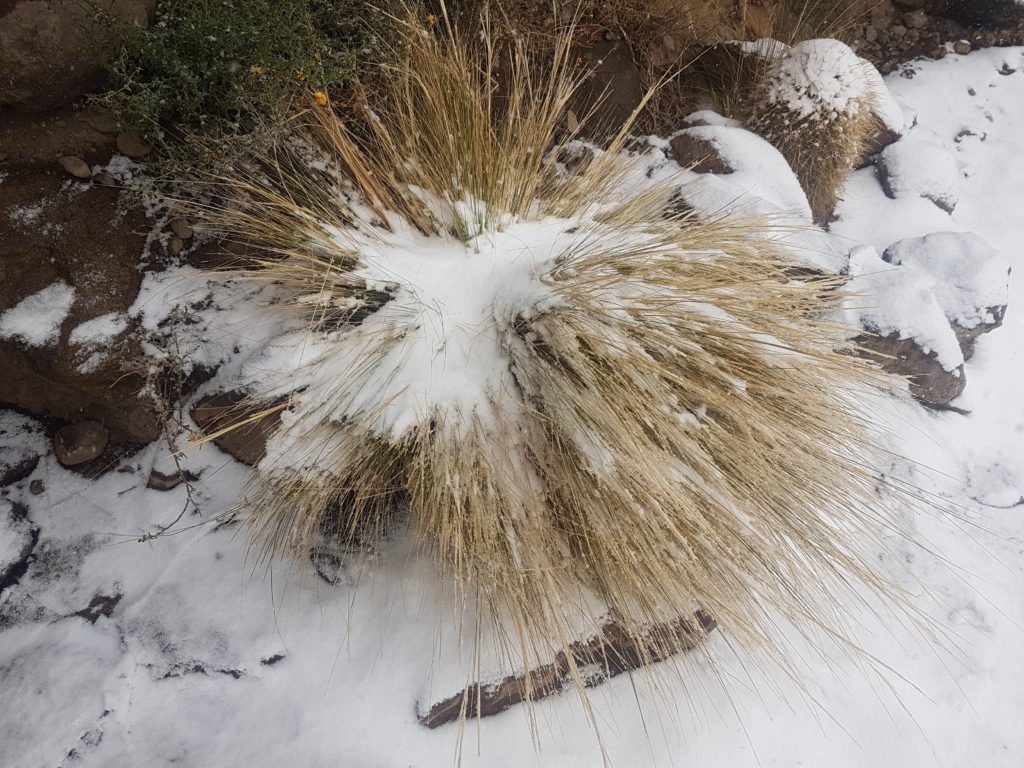

Leave a Reply